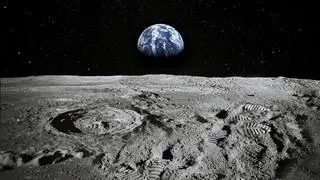Scientists are monitoring a ‘dent’ in the earth’s magnetic field, which acts as a protective shield around the planet.
The magnetic field repels harmful particles from the sun from entering the earth’s surface.
Space agencies have observed an anomaly over South America and southern Atlantic Ocean, an unusually weak spot in the field – called the South Atlantic Anomaly or SAA.
The SAA allows these particles to dip closer to the surface than normal.
This could be potentially harmful to satellite missions passing through the area.
“Particle radiation in this region can knock out onboard computers and interfere with the data collection of satellites that pass through it — a key reason why NASA scientists want to track and study the anomaly,” National Aeronautics and Space Administration (NASA) said in an official release.
“Recent observations and forecasts show that the region is expanding westward and continuing to weaken in intensity. It is also splitting — recent data shows the anomaly’s valley or region of minimum field strength, has split into two lobes, creating additional challenges for satellite missions,” it said.
Back in May, the data gathered by the European Space Agency’s swarm of satellites revealed that the anomaly was weakening the earth’s magnetic field. The area of the anomaly dropped in strength by over 8 per cent between 1970 and 2020, as per the data.
One of the possible explanations for this could be a shift in the earth’s magnetic field, whereby the North Pole and the South Pole switch places as the field reverses.
This reversal last happened 7.8 lakh years ago, with scientists believing that a shift is long overdue. These reversals usually happen at an interval of 250,000 years.
“The observed SAA can also be interpreted as a consequence of weakening the dominance of the dipole field in the region,” said Weijia Kuang, a geophysicist and mathematician in Goddard’s Geodesy and Geophysics Laboratory. “More specifically, a localised field with reversed polarity grows strongly in the SAA region, thus making the field intensity very weak, weaker than that of the surrounding regions.”
The SAA is already impacting certain space missions, including instruments outside NASA’s International Space Station.
“Instruments like the Global Ecosystem Dynamics Investigation mission, or GEDI, collect data from various positions on the outside of the ISS,” NASA said.
Though it doesn’t harm the instrument, the SAA causes “blips” on GEDI’s detectors and resets the instrument’s power boards about once a month, according to Bryan Blair, the mission’s deputy principal investigator and instrument scientist, and a lidar instrument scientist at Goddard.
Scientists from ESA and NASA are continuously monitoring the anomaly and its impact.
“By tracking this slowly evolving “dent” in the magnetic field, researchers can better understand the way our planet is changing and help prepare for a safer future for satellites,” NASA said.








Comments
Comments have to be in English, and in full sentences. They cannot be abusive or personal. Please abide by our community guidelines for posting your comments.
We have migrated to a new commenting platform. If you are already a registered user of TheHindu Businessline and logged in, you may continue to engage with our articles. If you do not have an account please register and login to post comments. Users can access their older comments by logging into their accounts on Vuukle.